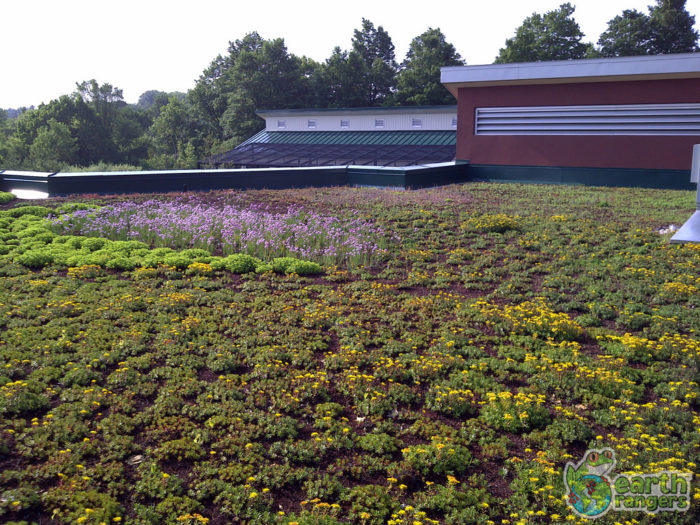
Image Credit: Earth Rangers Centre / Flickr
A sweeping plan passed by Denver voters last fall to require green roofs on large buildings is headed for a rewrite.
The Denver Post reports that a task force representing a variety of city interests has proposed a number of changes in the citizen initiative that would allow more flexibility and lower costs.
Denver’s city charter prevented changes to the original set of rules for six months, but with that prohibition expiring, the City Council will soon see a revised plan that gives building owners options beyond adding garden areas or solar panels to their roofs. Like the original requirements, the draft revisions are designed to reduce the urban heat island effect and lower carbon emissions. The plan will need a two-thirds majority of the council in order to take effect.
Brandon Rietheimer, who managed the campaign for the initiative last year, has been generally positive about the task force’s revisions.
“It basically tries to keep the benefits all the same, even if it’s achieved through different means,” he told The Post. “In some ways we might be getting a bigger climate benefit than we would have initially.”
Original rules took a hard line
The grassroots campaign to require rooftop gardens was opposed by a variety of business interests in Denver (including The Denver Post), but it won the support of more than 54% of city voters in November. The ordinance became the most stringent of its kind in North America, requiring new buildings of 25,000 square feet or more to devote at least 20% of the rooftop to vegetation or solar panels. As buildings got bigger, roofs would be required to have proportionately more vegetation or solar; at 200,000 square feet, 60% of the rooftop would have to be covered.
The rules also applied to buildings that were being re-roofed, but the ordinance exempted certain buildings, such as residential structures of four stories or less.
Backers hoped the initiative would lower summer temperatures by reducing the total area of heat-absorbing roofing materials. What’s called the urban heat island effect is a particular problem in Denver, where average daily temperatures in the summer have been nearly 5 F° warmer than rural areas nearby, according to a 2014 analysis by Climate Central. Only Las Vegas and Albuquerque showed a more pronounced effect.
A study by the Green Initiative Foundation estimated that the plan would result in 57.5 million square feet of green roofs by 2058, along with a net cumulative benefit to Denver of $1.85 billion.
But critics said the initiative would increase construction and maintenance costs, especially on older buildings that might need structural upgrades when their roofs were replaced. The formula for calculating the roof area for vegetation and solar was especially tough for large, one-story commercial buildings.
In the runup to the vote, Denver Mayor Michael Hancock said the plan was “not the right approach” and would “actually hinder efforts to pilot, promote, phase and incentivize green infrastructure.”
What the task force wants now
The task force draft plan would cover the same buildings as did the original citizen initiative, although replacement roofs on buildings owned by nonprofits or designated as affordable housing would be exempt. Instead, those buildings would have to use reflective, or “cool,” roofing materials when roofs were replaced.
Here are some of the other changes:
- Building owners could choose to put vegetative areas on the ground or on terraces instead of on the rooftop.
- For new buildings, a revised formula would require 10% roof coverage times the number of floors to a maximum of 60% of the roof area for buildings six stories or higher. This change makes it easier for large, low buildings to comply.
- All new buildings will be required to use cool roofing materials. In addition, developers could choose one of eight other options for compliance. Options range from making a financial contribution for offsite green areas to buying into community solar and certifying buildings to LEED Gold standards.
- Owners of existing buildings also would have several new options for compliance when the roof is replaced, including LEED certification, installing a cool roof and making a financial contribution, or taking other steps for energy efficiency with equivalent reductions in emissions.
The task force said that the changes would increase the total roof coverage by about 14.5% while reducing costs by at least 20% and possibly much more. New construction should see a cost increase of less than 1% in order to comply with the new rules.
“While it is not task force members’ ideal policy, it is a compromise that members believe is getting closer to something that all can accept because it strengthens the benefits while reducing the costs,” the task force overview says.
The public comment period ends June 3.
Weekly Newsletter
Get building science and energy efficiency advice, plus special offers, in your inbox.














0 Comments
Log in or create an account to post a comment.
Sign up Log in